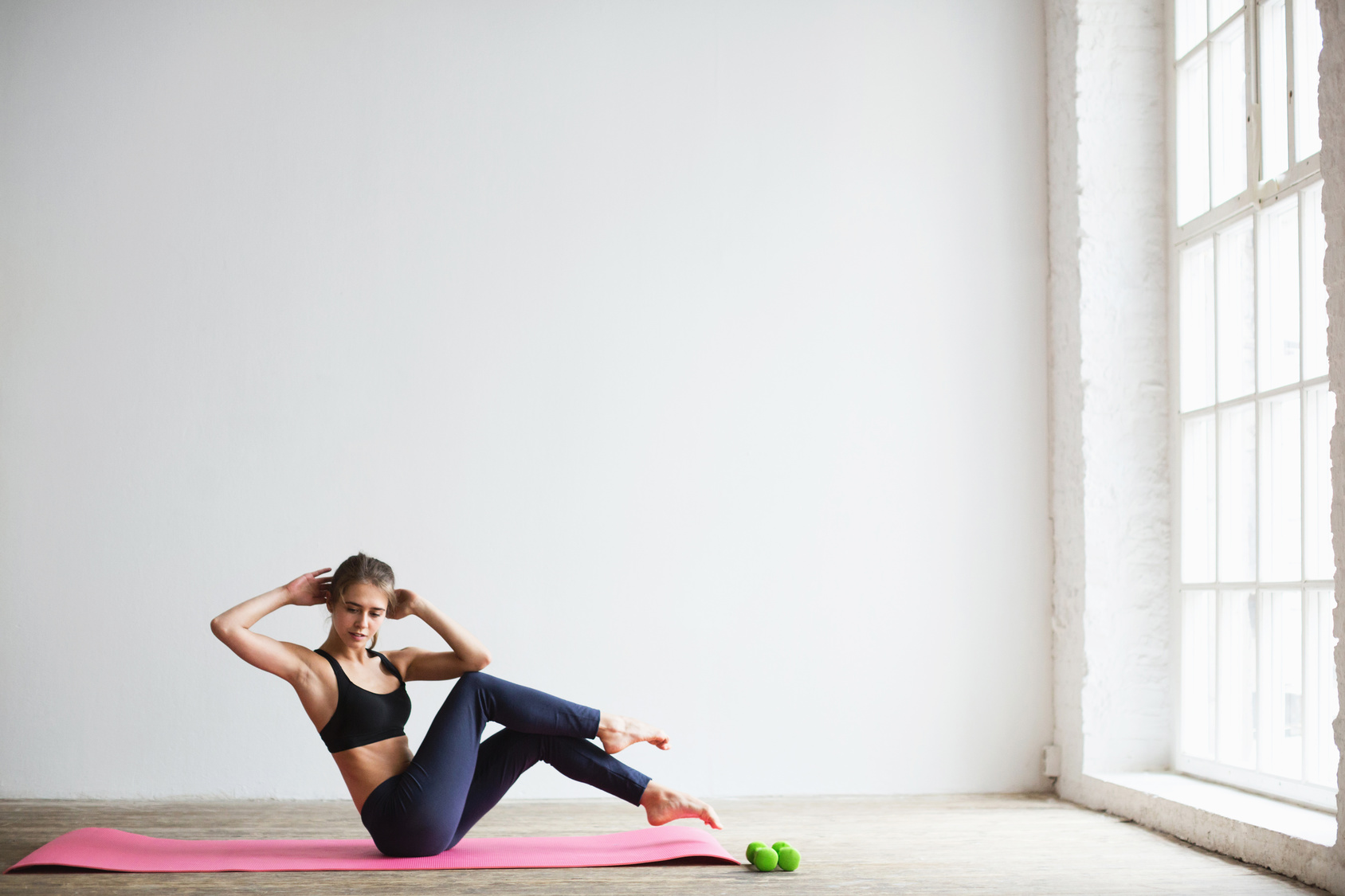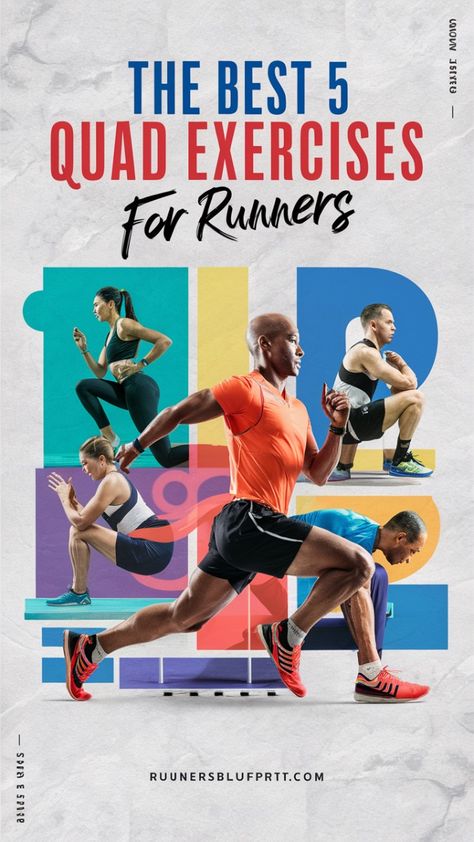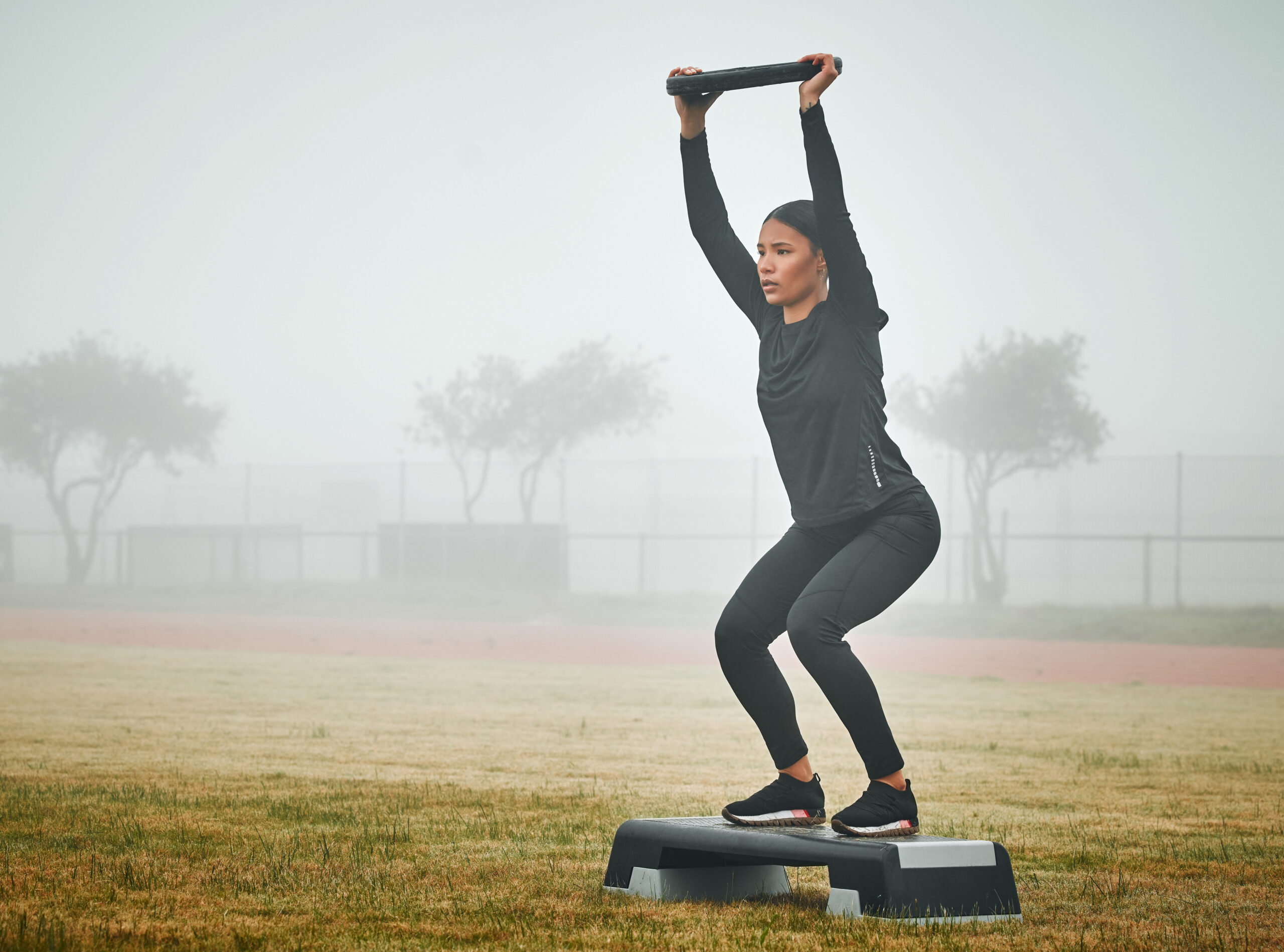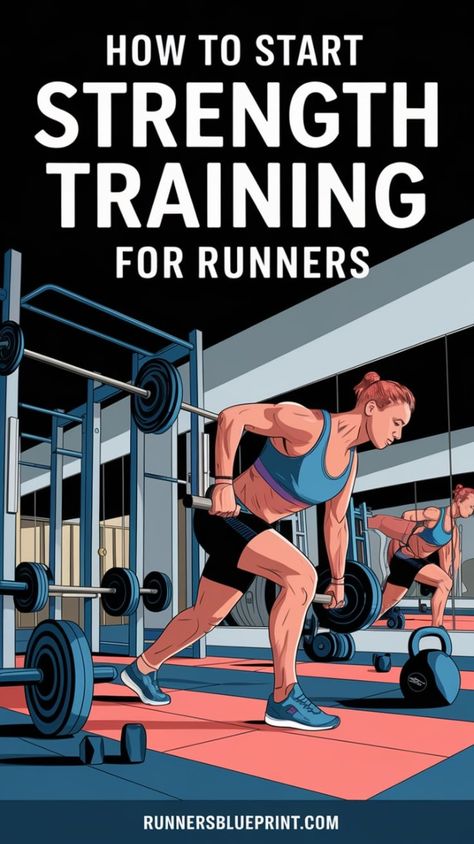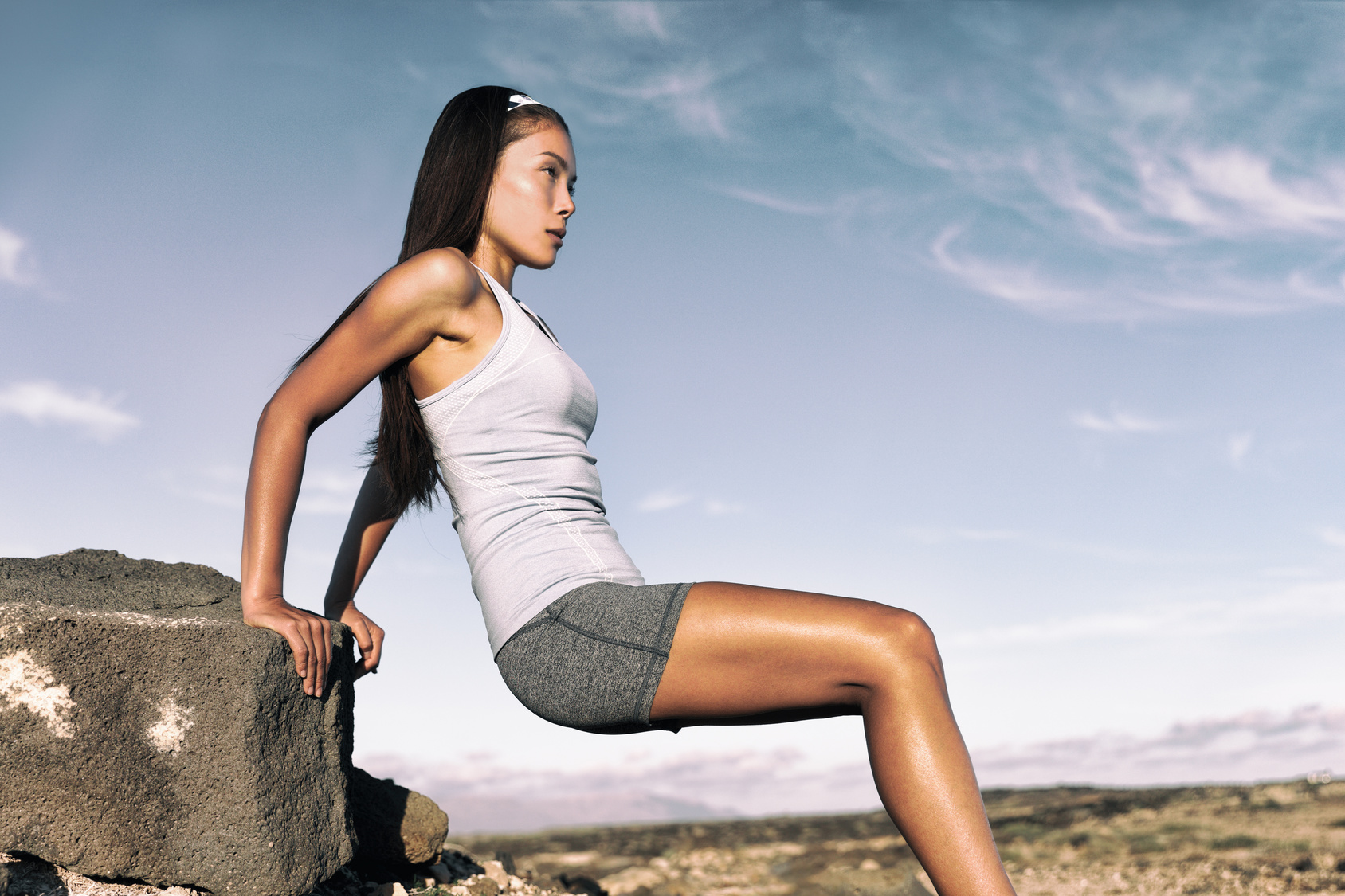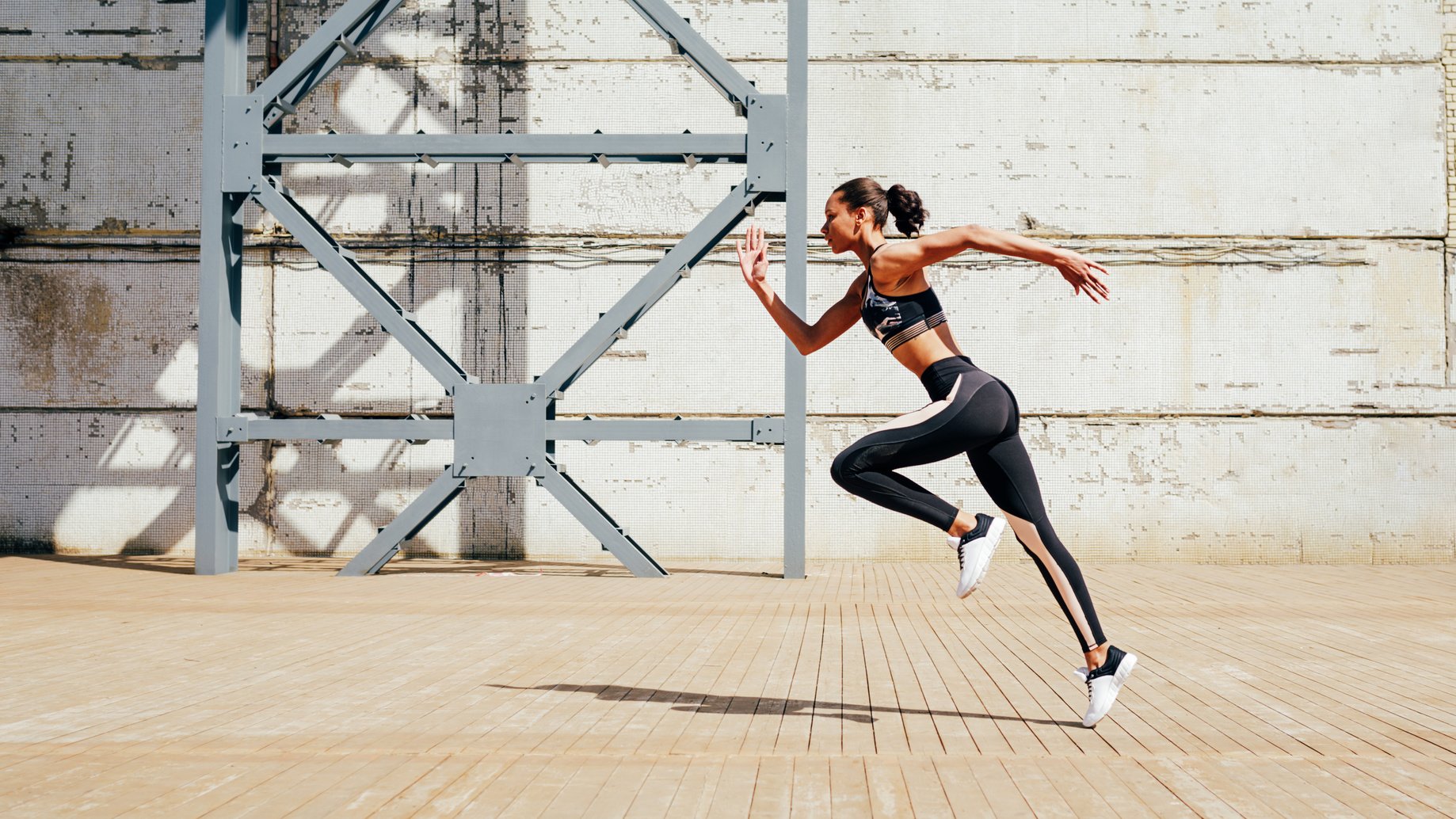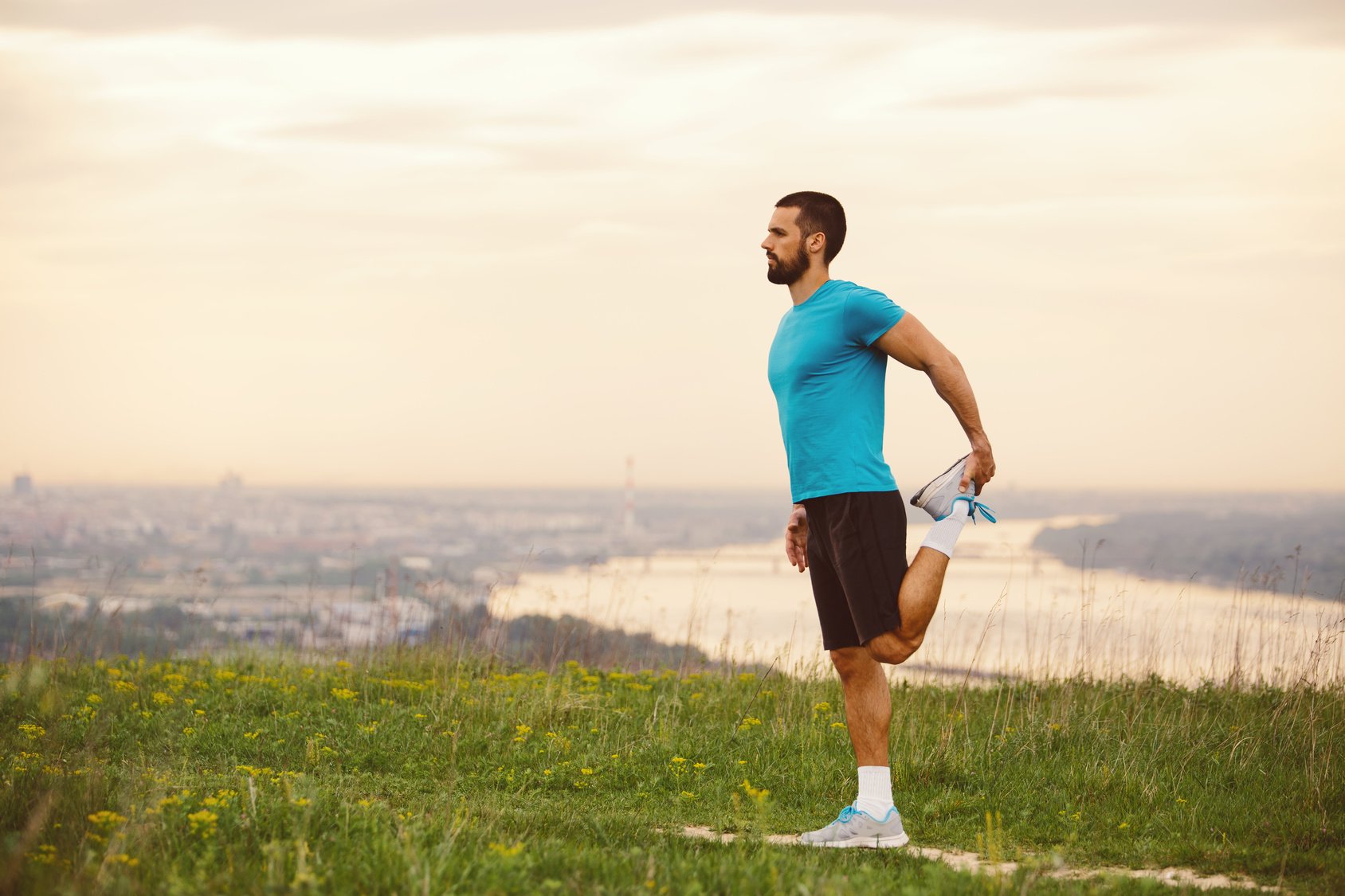When I first got into running, I thought mileage was all that mattered.
I’d lace up, grind through my runs, and skip anything that looked like a gym workout.
Big mistake.
It wasn’t until knee pain started creeping in and hills left me gasping that I realized my legs weren’t as strong as I thought.
The missing piece? Quad strength.
Once I started training my quads consistently, everything changed—my pace got faster, hills felt doable, and those post-run aches became rare.
Now I coach other runners through that same transition.
Let’s talk about why strong quads matter and how to build them the smart way.
What Are the Quads, Anyway?
The quads are a team of four muscles:
- Vastus Medialis: That teardrop-shaped muscle near your inner knee. Helps with knee extension and patella tracking.
- Vastus Lateralis: The big one on the outside of your thigh. Drives that push-off power.
- Rectus Femoris: Sits right down the middle. Helps lift your knee and extend it.
- Vastus Intermedius: Hidden under the rectus femoris. Quiet but crucial for knee extension.
Together, they connect into the patellar tendon and keep you upright, springy, and steady when running.
I like to say your quads are your leg’s suspension system—ignore them, and sooner or later, something’s going to rattle loose.
Why You Should Train Your Quads
Here’s what strong quads do for your running:
1. More Speed, More Power
Whether you’re sprinting or grinding up a hill, it’s your quads doing most of the heavy lifting. Build them up, and you’ll feel that extra kick in your stride.
A trail runner I coached once told me he’d burn out on downhills. We added controlled single-leg strength work—things like slow step-ups—and soon those hills weren’t such a beast.
2. Injury Protection—Especially Knees
Runner’s knee is no joke—and guess what’s often behind it? Weak quads.
I’ve coached plenty of runners who came in with knee pain. Strengthening their quads, hips, and glutes almost always made a difference. One beginner even ditched their runner’s knee completely after adding Bulgarian split squats to their routine.
3. Better Endurance, Less Burnout
You know that jelly-legged feeling at mile 10? Strong quads help delay that. They take over when your other muscles start fading.
I call them the “mile 20” muscles—the ones that keep you moving when everything else is screaming stop.
Many marathoners I work with report smoother final miles after consistently training their quads. It’s not magic. It’s just muscle.
4. Shock Absorption and Downhill Control
Running is impact. Your quads are built to handle it—if you train them right. Downhill runs especially load your quads hard. That eccentric (braking) force? Brutal if you’re undertrained.
Now I preach:
Train slow, controlled step-downs:
- Poliquin step-ups
- Wall sits
They prep your quads for battle and save you days of soreness.
5. Improved Running Form
Strong quads don’t just keep you moving—they keep you moving right.
When they’re weak, your knees wobble, your stride shortens, and you compensate in weird ways. But when they’re solid? Your posture holds. Your form stays sharp even deep into the run.
I tell my runners: “Strength fills the cracks in your form.” Without it, you leak energy and risk injury.
How to Train Your Quads Without Wrecking Your Runs
Here’s how I approach quad training with my runners:
Start Easy
Don’t go from zero to max squats overnight. You’ll wreck your legs and end up skipping your runs. I’ve seen it too many times. Start with bodyweight movements—just 1 or 2 sets. Learn the form. Then slowly add reps, sets, or weight.
Warm Up Right
Cold quads = trouble. Before you lift, jog or cycle for 5–10 minutes, then hit some dynamic moves like:
- Bodyweight squats
- Walking lunges
- Leg swings
- High knees
Think of your quads like chewing gum. Cold = stiff and easy to tear. Warm = stretchy and ready to roll.
My go-to warm-up: 5-minute jog + 10 squats + 10 walking lunges + 30 seconds high knees = ready to train.
Focus on Form, Not Ego Reps
Let me say this upfront: when it comes to strength work, form is king. You can crank out 20 sloppy reps, but if your knees are caving in or your back’s folding like a beach chair, you’re doing more harm than good.
I’ve seen it—and I’ve done it. I used to load up the squat bar like I was auditioning for a powerlifting meet, only to realize I wasn’t even going halfway down. My ego loved it. My quads? Not so much.
Once I swallowed my pride, dropped the weight, and actually hit depth with solid form, the real progress started.
I got stronger. My knees felt better. And I wasn’t limping around after leg day anymore.
So, what does “good form” actually look like?
Move with control. No bouncing. No jerky reps.
- In squats or lunges, lower slow—feel your quads work on the way down—then push up with purpose.
- Don’t let your knees cave in. Keep them in line with your toes.
- Brace your core and keep that back from rounding.
- Use a mirror or better yet, film yourself. What you think you’re doing might not be what’s really happening.
One rule I stick by—and preach to every runner I coach—is simple: never sacrifice form just to do more reps or heavier weight.
If your form starts breaking down, stop or lighten the load.
That’s not weakness—it’s smart training.
And here’s a little twist most runners overlook: sometimes lifting less with better form builds more muscle.
I’ve had athletes cut their leg press weight in half and double their results, just because they finally started working the right muscles instead of relying on momentum.
Keep this in mind: as you get stronger, you’ll naturally move toward fewer reps with heavier weight. That’s how real strength is built. You don’t need 20 reps if 8 well-executed reps leave your quads burning.
Quality over junk volume—always.
Quick checkpoint:
- Are your reps controlled?
- Are you feeling the muscle work?
- Is your form staying solid all the way through?
If the answer isn’t a full yes—adjust. Train smart, not just hard.
Don’t Forget Your Backside: Glutes and Hamstrings
Now let’s talk about what most runners ignore: the muscles behind you.
Yeah, we’re quad machines. All that forward motion makes the front of our legs overactive. But if your hamstrings and glutes can’t keep up, your form falls apart. Your knees ache. Your posture sags. And worst of all—you get slower.
Been there. A while ago, I was hammering squats, doing hill sprints, thinking I was bulletproof. Then came a nasty hamstring pull during a simple stride session. That’s when I realized I had been training half my legs.
Fix the imbalance:
- Add glute bridges, Romanian deadlifts, clamshells, hamstring curls
- Pair every quad move with a posterior chain move
Examples:
- Squats? Follow with glute bridges
- Lunges? Pair with single-leg RDLs
- Leg press? Add hip thrusts or band walks
And remember, strong glutes aren’t just for show—they’re your running engine. The quads are the gearbox. But without that engine, you’re not going anywhere fast.
One coach of mine used to say, “If your glutes are sleeping, your knees will cry.” I’ve found that to be painfully true in both my own training and my athletes’ struggles.
My Top 5 Quad Moves for Runners (That Actually Work)
Want stronger, more stable legs that won’t crap out at mile 18? These five exercises are my personal go-to’s for building quads that can take a beating and still push strong.
I’ve rotated through these for years, both in my own training and with clients. You don’t have to do them all in one go—3 to 4 per session is plenty—but trust me, they all earn their place in what I call the Runner’s Quad Hall of Fame.
Quick heads-up: If you’re new to strength work, start with just your body weight—especially on things like squats or lunges. Once it feels solid, then bring in the dumbbells or a barbell.
Oh, and if anything feels sharp or wrong? Stop. Muscle burn = good. Sharp pain = nope.
1. Squats
Let’s be real—squats are the bread and butter of leg strength. I call them the king of quad moves, and not just because they look cool with a barbell.
They hit your quads, glutes, and core all at once, and the strength you build here translates directly to better push-off and better posture when running.
When I first got into squats, I stuck with bodyweight. I wanted to master the movement before adding any load. That patience paid off—once I added weight slowly, my legs felt way more solid on long runs. Less wobble. Less fade. Way more power in the late miles.
Why runners should care:
Squats mimic real movements—like getting off a chair or climbing stairs. That makes them perfect for building running strength.
They also fire up your core, which helps you hold your form when things get tough.
After a couple of months of squatting regularly, I noticed I didn’t lean forward or collapse as much in the final stretch of races.
Bonus: they also wake up those small stabilizer muscles around your knees and ankles, the ones that keep you from rolling an ankle when you hit a weird patch of sidewalk or trail.
How to squat (the right way):
Stand with feet shoulder-width apart. Toes slightly turned out is fine.
Brace your core like you’re about to get punched.
Sit your hips back like there’s an invisible chair behind you.
Lower slowly, keeping your weight through your heels and midfoot.
Try to get your thighs at least parallel to the ground (deeper is great if your form holds).
Keep your knees in line with your toes. No knees collapsing inward.
Push through your heels to stand up tall. Exhale on the way up.
Do 8–12 reps for 2–3 sets to start.
Variations worth trying:
Goblet Squats – Hold a dumbbell at your chest. Great for posture.
Box Squats – Squat to a box or bench and stand back up. Teaches depth.
Jump Squats – Add these later for explosive power once you’ve built some strength.
2. Single-Leg Squats
These are the truth-tellers. They show you instantly if one leg is weaker than the other.
They’re also brutal (in the best way) and make a massive difference for runners—especially if you deal with imbalances or knee pain.
When I first tried pistol squats, I couldn’t get halfway down without tipping over. I had to hold a chair and cheat like crazy. But over time, I built it up. The balance, the strength—it all translated to better form on the trails and more drive off each step.
It was humbling, but totally worth it.
Why runners need these:
Running is basically a series of single-leg landings. So it makes sense to train that way.
These squats wake up your stabilizers, force you to balance, and strengthen your hips and knees on each side.
They also work the inner quad (your VMO), which helps keep your knees tracking right. A lot of runners with cranky knees end up here—on purpose—because it builds the kind of support regular squats can’t.
How to do it:
- Stand near something sturdy for support
- Lift one leg off the ground, keep it straight
- Squat down slowly on the standing leg, pushing hips back
- Go as low as you can with control—parallel or deeper is the goal, but start wherever you can
- Push through your heel to stand back up
Can’t go deep yet? No worries. Just go partway. Even lowering to a chair on one leg and standing up is a solid starting point.
3. Leg Extensions
Leg extensions are one of those old-school moves that zoom in on the quads—specifically the front part of your thighs. We’re talking rectus femoris and vastus muscles doing most of the work here.
Unlike squats or lunges, this one’s a solo act for your quads—just your knees extending against resistance.
I don’t rely heavily on machines, but I do throw in leg extensions every now and then to finish off a leg session. They’re great when I want to empty the tank on my quads without my glutes or hamstrings stepping in. It’s like turning a spotlight on the front of your thighs and letting it burn.
But fair warning: this move puts direct pressure on your knees. If you’ve had knee injuries or tracking issues, tread lightly—or skip it altogether.
Some physical therapists even tell folks in rehab to stay away from the leg extension machine because the open-chain setup can overload the joint, especially with heavy weights or sloppy form.
That said, if your knees are healthy and you’re smart with your form and weight, it can be safe and effective. I always avoid locking out at the top—keeps the knees happier and the tension on the muscle, not the joint.
One thing I love about leg extensions is how they target the VMO (that teardrop-looking muscle by your knee). It’s key for keeping your knees stable. Try pointing your toes out slightly during the lift, and you’ll feel that inner quad light up.
I sometimes hold the top position for a second or two—just enough to make the quads scream (in a good way).
How I Set It Up:
Adjust the machine so the pad hits just above your ankles, and the pivot aligns with your knee
Start at 90 degrees or a little more—enough to keep tension on the weight stack
Lift smooth and controlled. Stop just short of locking out. Pause. Squeeze. Then lower under control
Keep your back glued to the seat, don’t rock or arch
Toes neutral or slightly out. No weird foot angles—it stresses the knee
Aim for 10–15 reps with good form. You should feel challenged but not like your knees are about to explode
4. Weighted Walking Lunges: Runner’s Secret Weapon
I’ve said it before—lunges are money for runners. And walking lunges? Even better. They add movement and flow, like slow-motion running with weights.
I love using them after runs for strength work (bodyweight style) or during gym days with dumbbells for more fire. The pattern mimics running—you step, lower, push off—and it trains your body to stay strong under fatigue.
Why they matter:
Walking lunges stretch and strengthen at the same time. When you step forward and drop into the lunge, your front quad is lengthening and loading up (eccentric strength), while your back leg gets a hip flexor stretch—something most runners desperately need.
Early on, I had IT band flare-ups. Lunges—done consistently—helped build hip strength and stability, and those issues faded.
Plus, they force you to balance, fire up your core, and stay tall. That control translates directly into smoother, more stable running form.
How to Do Them:
Hold dumbbells or go bodyweight
- Step forward, drop the back knee gently, don’t crash
- Keep your front heel down and your knee roughly over the foot
- Push off and go right into the next step
- Stay tall—don’t hunch or lean
- Start with 6–8 lunges per leg for 2 sets. Build to 10–12 per leg for 3 sets.
You can also do stationary lunges if you’re tight on space—but the walking version brings in that extra challenge of forward movement and balance.
5. Leg Press: Don’t Sleep On It
I know, I know—some purists roll their eyes at the leg press. But I’m here to say it’s not just a lazy squat machine.
Used right, it’s a solid tool—especially when you want to blast your quads without straining your back or relying on perfect balance.
I don’t live on it, but when I had a minor lower back issue a few years ago, I subbed leg press for squats and still got strong. It kept my quads fired up while letting my spine recover.
Why it works for runners:
The leg press isolates your quads (and glutes to some extent), and lets you load heavier than you might with a barbell.
That means more pushing power and leg endurance—especially when your goal is a strong kick at the end of a race or better climbing strength for hilly runs.
Foot position matters. Lower placement on the platform hits the quads harder. Higher placement shifts the load to glutes and hammies.
Keep your feet flat, knees tracking with toes, and no locking out at the top. Always keep that slight bend.
How I Use It:
Sit back, plant your feet shoulder-width apart
- Press up and unlock the sled
- Push until your legs are almost straight—don’t lock out!
- Control it back down. Don’t rush. Feel the stretch
- Keep your hips and back pinned to the seat—if they lift, you’re going too deep or the weight’s too heavy
Start with moderate weight. It’s easy to slap on plates and chase ego numbers here, but form matters more.
Go for smooth, full reps and don’t let your knees cave in.
Sometimes I finish with high-rep burnouts—like 20 reps to toast the quads. It’s brutal, but effective.
Build Stronger Quads to Run Harder, Longer, and Smarter
Here’s the simple truth: if you’re skipping leg strength work, especially for your quads, you’re leaving speed and resilience on the table.
These five moves are my go-to for runners:
- Squats
- Single-Leg Squats
- Leg Extensions
- Walking Lunges
- Leg Presses
Each one hits your quads differently.
Squats and leg press? They’re your heavy hitters — big, compound moves that build raw power.
Lunges and single-leg squats? Great for balance, stability, and ironing out side-to-side imbalances.
Leg extensions? They’re the isolation tool — great for fine-tuning and waking up underused fibers.
I like to mix things up. You don’t need to do all five in one session.
Example: squats, lunges, and leg extensions on Monday. Later in the week? Hit leg press and single-leg squats. Simple.
How much?
Stick to 2–4 sets of 8–12 reps. That range is solid for both building strength and adding a bit of tone.
Want to move faster? Then focus on moving better and stronger.
If you’re pressed for time, do them as a circuit—one set of each back-to-back. But I’ll warn you: your quads will be screaming. That burn? That’s the good stuff.
Big rule: Respect recovery. No leg day two days in a row. Let those muscles rebuild. That’s where the strength kicks in.
Real Talk: Common Questions I Hear From Runners
Let’s tackle the questions I get every week in coaching calls and inboxes. These come from runners of all levels — beginners to sub-3 marathoners.
🧠 How often should I train quads?
Most runners do well with 2–3 times per week. That’s the sweet spot. Enough to get strong, but not so much you’re hobbling during your long runs.
New to lifting? Start with 2 days (like Monday and Thursday).
More seasoned? You might handle 3 days (Monday, Wednesday, Friday).
Deep in a race build? Scale back to once or twice a week. Totally fine. You’re not slacking — you’re adjusting to survive marathon training.
Just stay consistent. Two sessions weekly, every week — that’ll do more for your quads than going hard once a month.
💪 Will lifting make my legs bulky?
Nope. That’s a myth — one I hear all the time.
You’d only bulk up if you lifted heavy daily, ate like a bodybuilder, and ditched cardio. That’s not us.
A solid strength routine for runners, paired with regular miles, won’t blow up your thighs. You’ll actually get leaner, stronger, and faster.
I’ve seen it in my own training — more quad work led to stronger finishes and new PRs. My weight stayed steady, but my legs felt bulletproof.
And science backs this up. As noted by Runner’s World, it takes a very specific overload + calorie surplus to build mass.
Running burns that off, especially with endurance mileage.
So no, you won’t look like a powerlifter. You’ll run like a stronger, more efficient version of yourself.
And your finish-line photos? Way more confident.
🦿 Can quad training help my knees?
Big time. This is one of the main reasons I preach quad strength.
Stronger quads = better knee control. They guide the kneecap and absorb impact, taking pressure off your joints.
I’ve seen runners with chronic knee pain start doing consistent quad + glute work, and within weeks the pain begins to fade. The muscles step in where the tendons and ligaments used to suffer.
Just don’t train quads in isolation — include glutes and hamstrings too.
That trio protects your knees from all angles. It’s like putting your knees in armor.
If your knees have been bugging you, especially post-run? Quad work could be the missing link.
🗓️ Should I lift on run days or rest days?
This is where strategy matters.
Here’s the mantra I follow: Hard days hard. Easy days easy. Stack your tough stuff together, then give yourself full rest days after.
Run hard in the morning? Do your strength later that day.
Doing an easy jog? You can tack strength on after.
Rest day? If you’re doing strength that day, make sure it doesn’t turn into a secret hard day. Keep it focused and short.
Avoid heavy quad workouts right before a big run. You don’t want jelly legs going into your interval session or long run.
Personally, I like pairing easy runs with leg strength. I’m already in my gear, already warmed up, and mentally in training mode.
🧭 When’s the best time in a training cycle for strength?
Think of your training like a wave:
Off-season/Base phase: Go hard. Lift heavy. Push your limits. You’ve got room to be sore.
Race prep: Maintain. Cut back volume, reduce intensity. Keep the gains without burning out.
Race week: Keep it light. No deep squats a few days before your marathon. Stretch, activate, and stay loose — no wrecking your legs.
Even in peak season, I recommend doing at least one quad session a week. Otherwise, you’ll lose the strength you worked so hard to build.
I usually drop my heavy lifting 7–10 days before a big race. No more barbell squats. Just bodyweight work and activation stuff.
🏔️ I run hills — do I still need quad workouts?
Hills are awesome. They build strength, power, and grit. Some people call them “the poor man’s weight room,” and they’re not wrong.
But… they’re not enough.
Hill running hits quads during the concentric phase (the push). What you miss is the eccentric work (the controlled lowering), which is key for protecting knees and building downhill durability.
Also, hills don’t address lateral stability or single-leg balance much. Exercises like lunges, step-downs, and single-leg squats fill that gap.
So yes, even if you run hills, add a little structured strength work. A couple of sets a week could be what breaks you through that plateau.
⏱️ Should I lift before or after a run?
After, most of the time.
Running requires fresh legs — especially speed or long sessions. If you lift first, your run suffers. Form breaks down. Injury risk goes up.
If you must combine them, do your quality run first, then strength. Or split them into morning/evening sessions.
Exception: Do light activation drills pre-run — stuff like lunges, skips, or leg swings — to wake up your muscles.
But skip the barbell squats beforehand.
Final Thoughts: Strong Quads, Strong Runner
Let me say this loud: your quads are your engine room. Build them up, and your whole running game changes.
I’ve been on both sides — the runner who skipped strength and paid for it with soreness and injuries, and the runner who lifts smart and sees the difference in every stride. The second version wins.
You’ll feel stronger on hills. Your stride will hold steady late in the race.
And maybe most importantly? Your knees will thank you.
So take this as your cue. Start small. Stay consistent. Own the process.
You don’t need fancy machines or a power rack — just some time, intention, and a willingness to grind.
The Conclusion
There you have it!
The above quad exercises are the best when it comes to increasing strength in your lower body, especially in the rectus femoris muscle.
Do this awesome quad workout on a regular basis if you’re serious about making real progress. Also, keep in mind to stay within your fitness level the entire time.
Here are more strength exercises for runners.
Please feel free to leave your comments and questions in the section below.
In the meantime thank you for reading my post
Keep Running Strong
David D.

